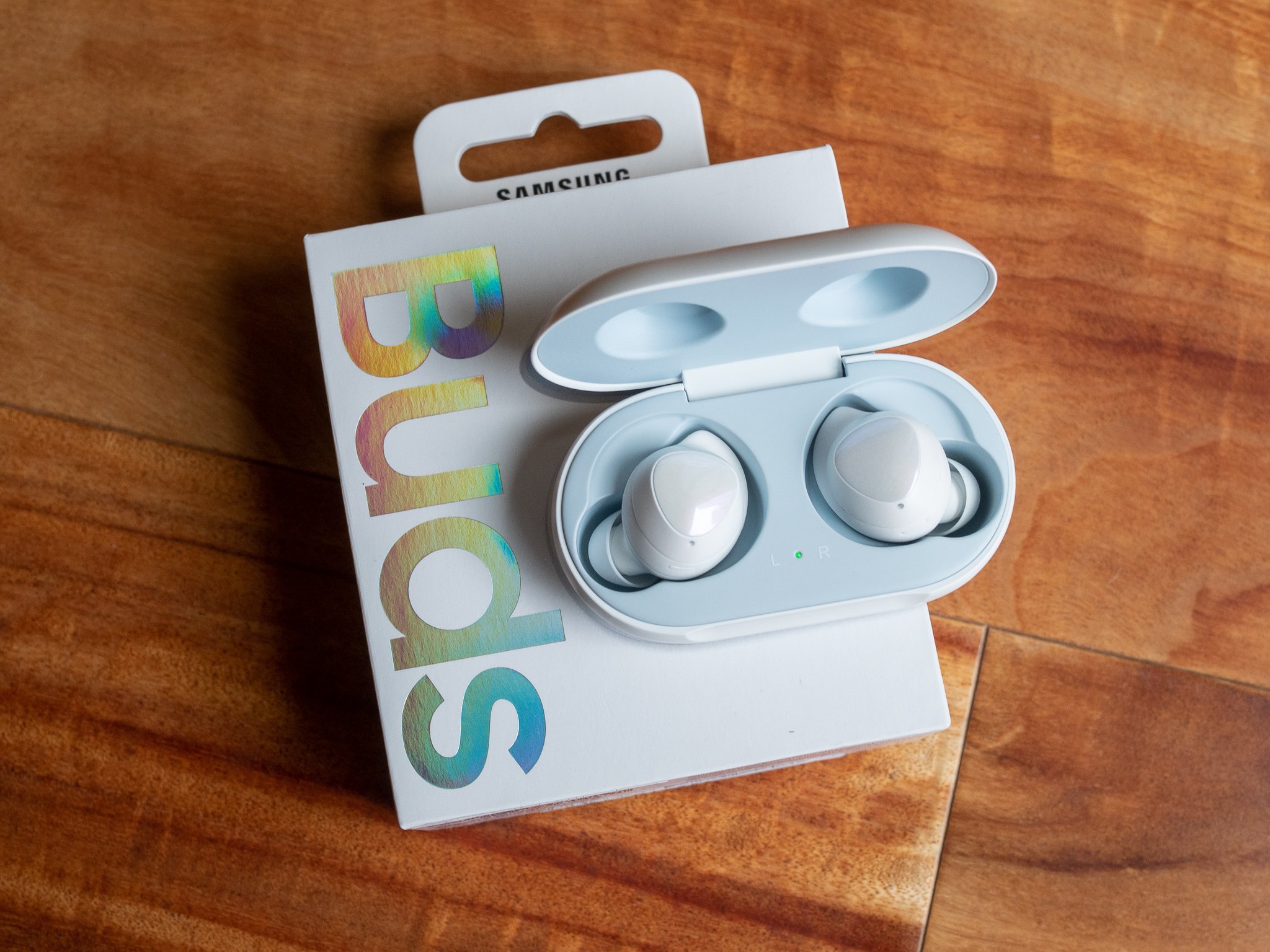Truly wireless earbuds are all the rage now, with dozens of companies getting in the game and making great products. But Samsung was actually very early in this trend: its first IconX earbuds came out in in 2016. With years of experience in smartphone accessories, and its acquisition of Harman in 2016, Samsung has seriously improved its audio prowess — ranging from high-end equipment down to lifestyle products like the new Galaxy Buds.
The move to a more consumer-friendly "Galaxy" branding and tight integration with Samsung's Galaxy phones should give you a hint as to where Samsung is looking with the Galaxy Buds: it wants some of that sweet AirPods money. Samsung isn't leaning so hard on the fitness angle anymore, and has positioned the Galaxy Buds as every-day headphones to accompany your phone for everything from commuting to daily call duties and hitting the gym after work.
The Good
- Excellent comfort for all activity
- Solid sound quality for wireless earbuds
- Compact case with wireless charging
- Good Bluetooth and L/R connection
- More than adequate battery life
The Bad
- Case only provides 1 full recharge
- Touch controls require precise control
- "Ambient sound" passthrough is useless
Samsung Galaxy Buds What I love
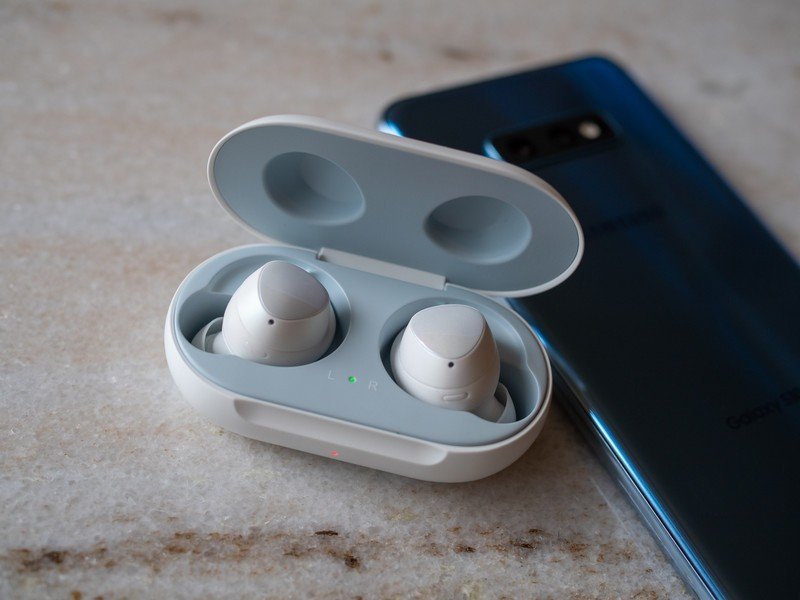
With lots of history in consumer electronics — and plenty of it in headphones — it's no surprise Samsung has done really well with the Galaxy Buds hardware. Starting with the earbuds themselves, they're extremely comfortable and easy to fit in your ear the "right" way as to not distract or cause discomfort. With multiple eartip sizes to go in your ear and silicone "wingtips" that rest on the outer edge of your ear, you should be able to find a fit that works (I stuck with the default mid-sized set just fine). Because these are self-contained little earbuds with no protrusions, there's zero chance that they can get hung up on your headwear, long hair, scarf, hood or anything of the sort.
The Galaxy Buds are supremely comfortable and stay put no matter what.
The earbuds manage to fit securely in your ear while also not putting any considerable pressure on any portion of the ear, which is a feat. They're incredibly light as well. Most hard plastic earbuds put unnecessary pressure on my ears, but this design that supports the entire earbud on just the silicone attachments and not the actual body of the earbud is really smart. I never had a single concern about them coming out of my ears during any daily movements or trips to the gym.
Despite being tiny, the Galaxy Buds offer touch controls on either earbud. You can tap once to play/pause music, double tap to accept/end a phone call and triple tap to seek tracks. Then in the Galaxy Wearable app, you can configure a touch-and-hold function for each earbud: either volume down (left earbud) and up (right earbud), or your choice of activating "ambient sound" (more on this below) and voice commands for Google Assistant or Bixby on either left or right.
The touch controls can be a little finicky considering the small size of the touch pad. That said, I far prefer touch controls of any sort (to say nothing of this comprehensive set) to not having touch controls at all. If you can get acquainted enough with the touch controls to even use them for the most basic level of interaction, such as play/pause music or accept/end calls, it's immediately saving you time over having to pull out your phone. And because the touch controls are configurable between left/right and with different functions, you'll be able to find something to use them for.

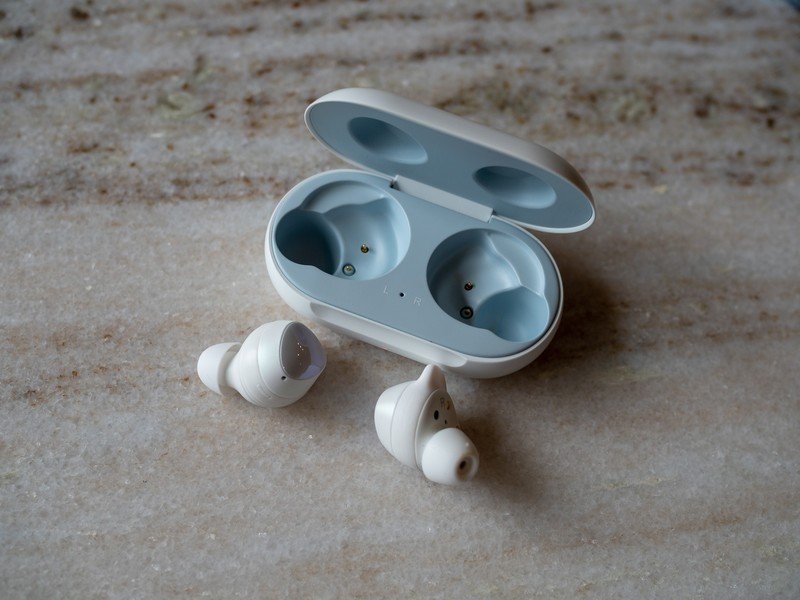
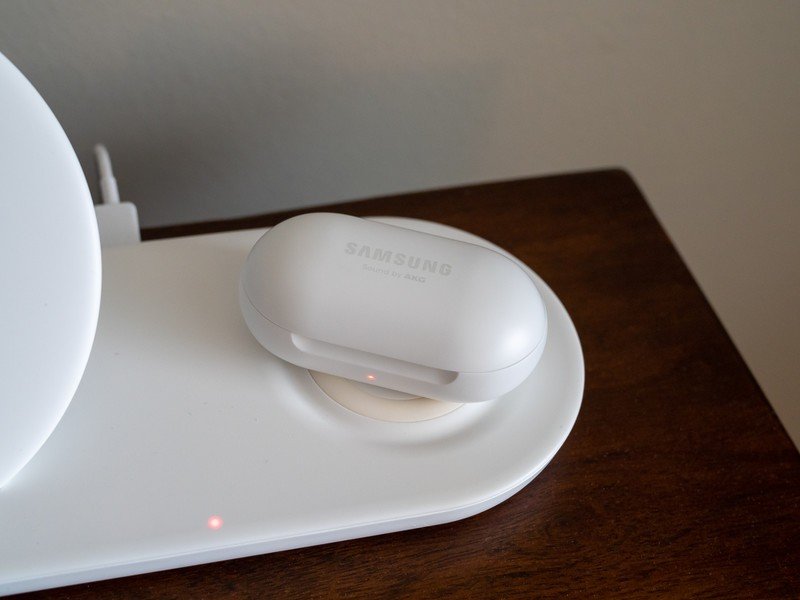
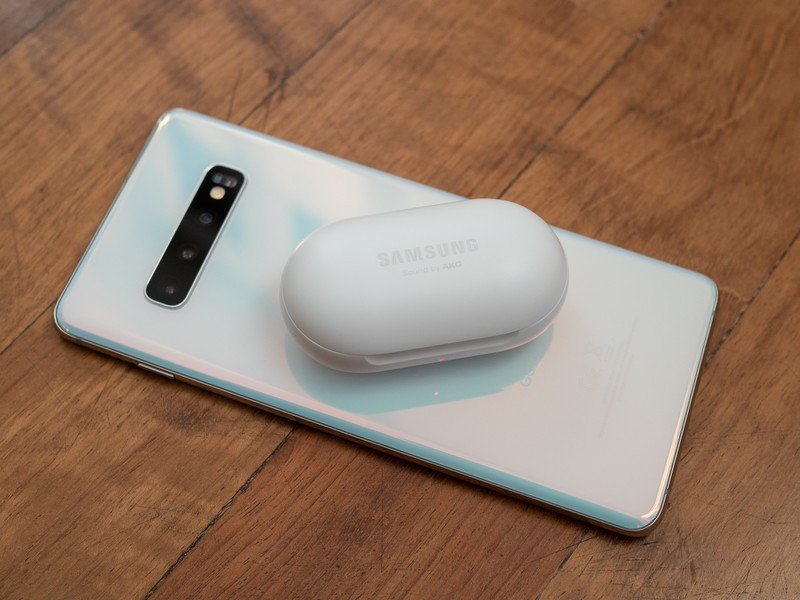
Nobody should expect exceptional audio quality out of earbuds, and especially not wireless earbuds. My standards are pretty low for these types of headphones because they're purely about convenience and comfort rather than quality, but the Galaxy Buds at least exceeded the low expectations. Particularly when you use the equalizer built into the companion app, sound quality is plenty good for the application — there's little bass and the overall sound can be a bit hollow, but you're just never going to pick these up for thoughtful music listening anyway. If you get the right eartip sizing, sound isolation is good enough that it helps with the overall listening experience.
Sound quality is fine, but just as importantly wireless connectivity has been solid.
With a couple weeks of listening under my belt, the Bluetooth connection to the phone and the left-right connection between the earbuds has been very good. I never had an earbud drop its connection or sync, and only experienced a couple little jitters in the phone connection as would be expected with any pair of Bluetooth headphones. Call quality was also fine. Polling people at the end of phone calls reported back many "it sounds fine" and nobody had any concerns with hearing me; on my end, I could hear callers just fine.
Outside of the simple automatic pairing process with Galaxy phones, there doesn't seem to be any difference in using the Galaxy Buds with my Galaxy S10+ and Pixel 3 XL. The Pixel recognized and paired with the Buds just fine like any other Bluetooth headset, before even installing the Galaxy Wearable app — though it's quite useful, so you'll want to install it.
This case is finally small enough to not be cumbersome — and it pack a few nice-to-have features.
Big advancements have been made in the case, even compared to the previous-gen IconX earbuds, making it one of the best overall truly wireless earbuds cases I've seen. It's considerably smaller than the last generation, pushing it down to a point where I can actually slip it in my jeans pocket next to my wallet (front pocket wallets forever, folks) without hassle; or put it in a coat pocket and completely forget it's there. By my rough measurement, the case at its largest dimensions is 69 x 40 x 26 mm — pretty darn small. The lid stays closed confidently with a strong magnet, and lighter magnets grabs the earbuds in so they're easy to toss in for charging.
I was initially worried about battery life, not because of the industry-standard 6 hours of life from the earbuds themselves but because the case only provides roughly one recharge. After using the Buds regularly since I received them with my Galaxy S10, I haven't once run out of power. Even though the earbuds are incredibly comfortable, I'm never wearing earbuds of any sort for more than 6 hours straight — and any time they're in the case, they're quickly being recharged. And with the case offering both USB-C and Qi wireless charging, it's easy to quickly charge it back up its tiny 252mAh capacity while you listen to the buds. And unlike some cheaper earbuds, the Galaxy Buds let you use one earbud or the other while charging the opposite one, which is helpful if you end up taking long phone calls with a single earbud.
Samsung Galaxy Buds What I don't like
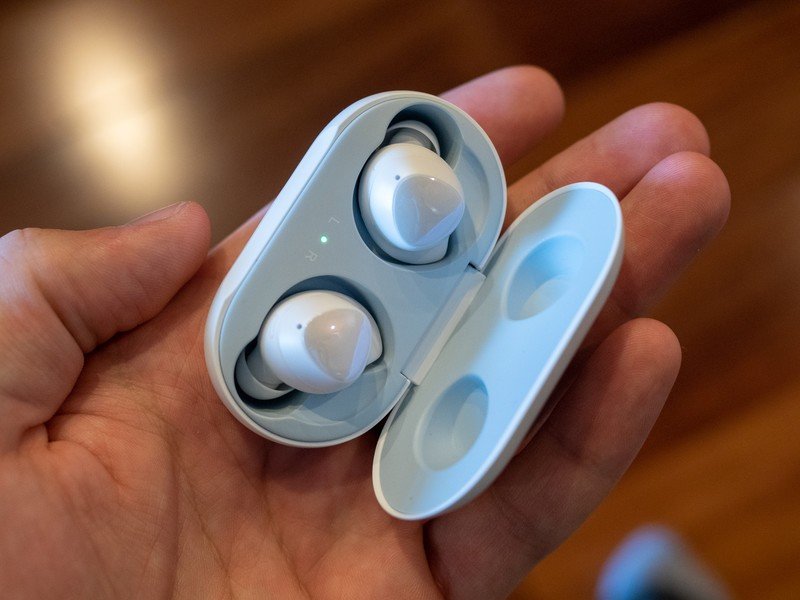
The only downside to this extremely compact design, as opposed to the "stick" design brought to the fore by Apple AirPods, is that the Galaxy Buds are a bit difficult to take out of your ears on quick notice. Because most of the body of the earbud is touch-enabled, it's tough to remove an earbud without also triggering the touch control because there's very little area to grab; and once they're out of your ears, they really need to go into the case for fear that you'll touch the capacitive pad while handling them any other way. It's a worthwhile trade-off so you don't have the issues with comfort or the earbud getting snagged on anything, but taking the earbuds out of your ears gracefully isn't something you think about until you've lived with them.
Tiny earbuds can be a bit fiddly to get out of your ear without also triggering the touch controls.
Because the Galaxy Buds can be a bit fiddly to quickly remove from your ears, I was excited to try out the "ambient sound" feature that will duck down whatever audio you're listening over Bluetooth and amplify the sound around you. You can turn on ambient sound permanently (don't do this), or map it to a press-and-hold on one of the earbuds. While great in principle (Sony's WH1000MX3 do this well), ambient sound just doesn't work well on the Galaxy Buds.
It's fine if you need to hear a brief loud announcement at an airport or train station, or if you're walking down the street and need to perceive where emergency vehicle sirens are coming from, but it's useless for having a quick conversation with someone or getting anything from a relatively quiet room. The sound amplification isn't strong enough, and rather than pausing your Bluetooth audio, it keeps it playing and drops it to about 10% volume, so you get this weird cross-talk between your quiet Bluetooth audio and outside sound that's quite disorienting.
Samsung Galaxy Buds Should you buy them?

Most people won't spend over $100 on any pair of earbuds, and that's especially true for what is likely to be a secondary pair of earbuds. But if you can justify spending around $80 for something mid-range like the SoundCore Liberty Airs, the $50 jump to the Galaxy Buds is worth it for the improved comfort, touch controls, call quality and case design.
4 out of 5
The Galaxy Buds are a great pair of headphones with excellent comfort for hours of daily headphone use, but also the right design to be a good choice for hitting the gym or going on a run. The wireless connection is strong, the battery life is long, music and call quality are solid, and the case is compact and well-designed. If the $129 price tag doesn't immediately price you out of the Galaxy Buds, you should absolutely consider them as your next pair of truly wireless earbuds.
Andrew was an Executive Editor, U.S. at Android Central between 2012 and 2020.
